Key takeaways
- Social Emotional Learning (SEL) is crucial for fostering trust and empathy in classrooms, enabling deeper learning experiences.
- Integrating SEL into everyday routines, such as emotional check-ins, creates a sense of community and enhances student engagement.
- Modeling emotional vulnerability as a teacher encourages students to open up about their challenges, aiding in their emotional development.
- Flexibility in lesson planning allows for meaningful discussions that address students’ emotional states, enhancing learning outcomes.
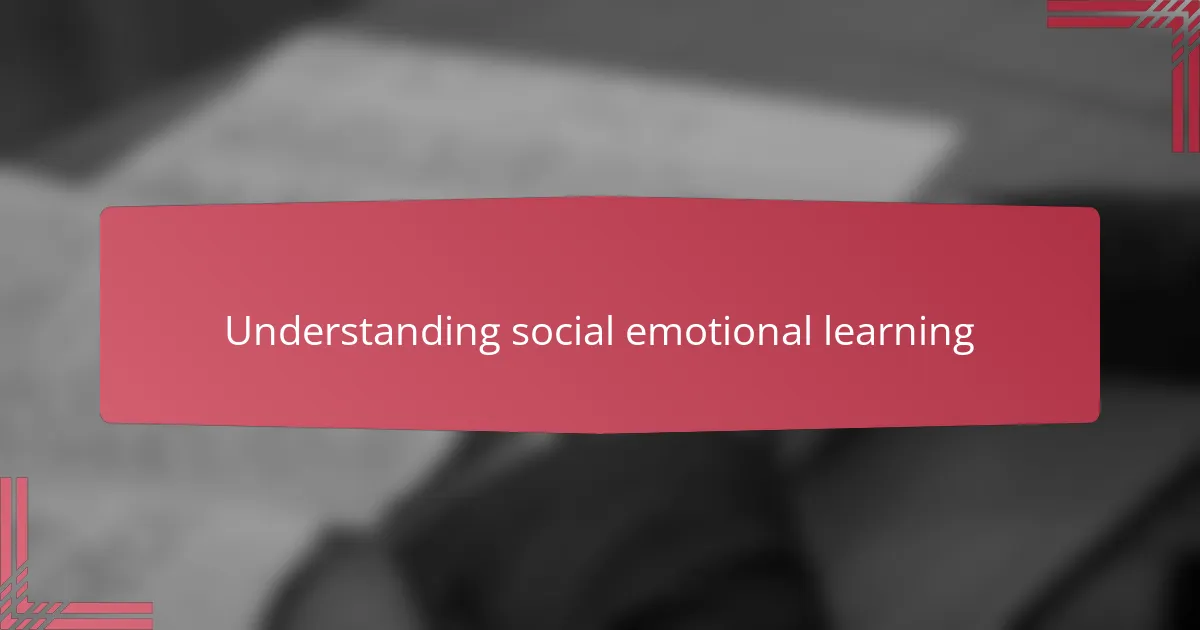
Understanding social emotional learning
Social emotional learning, or SEL, is about more than just teaching kids to get along. It’s about helping them understand their own feelings and the feelings of others — something I learned firsthand when a student opened up about her anxiety during a group activity. Have you ever noticed how much energy goes into managing emotions before any actual learning can happen?
In my experience, SEL creates a foundation of trust and empathy, which makes the classroom feel like a safer space. But it’s not always smooth; sometimes students resist talking about their emotions, and that can be frustrating. Still, when those moments break through, you see genuine growth that textbooks alone can’t achieve.
I often ask myself, why don’t we treat social and emotional skills with the same importance as math or reading? After all, aren’t these skills what help kids navigate life beyond the classroom walls? Understanding SEL means recognizing its power to shape not just learners, but human beings.
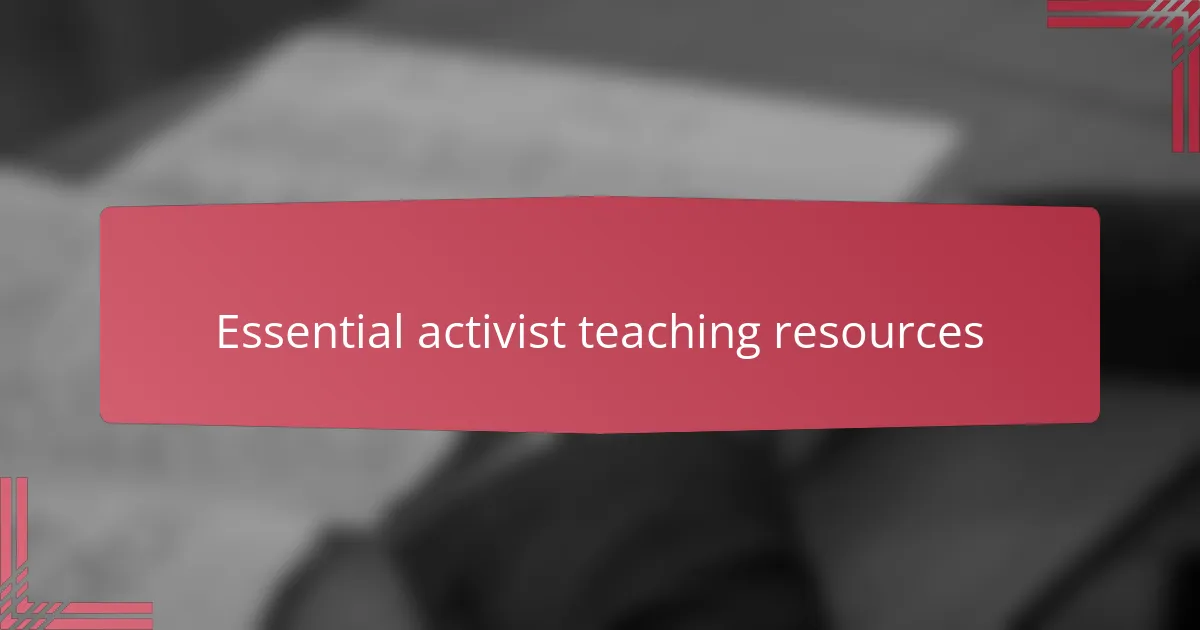
Essential activist teaching resources
Finding the right activist teaching resources felt like searching for a compass in a fog when I first started. I quickly realized that materials grounded in real-life issues and emotional relevance made all the difference. Have you ever seen students light up when a lesson connects directly to their lived experiences? That’s the power of resources that don’t just inform but inspire.
I’ve learned that essential activist resources don’t just provide content; they offer ways to bring voices from the margins into the classroom. Using stories, art, and discussions centered on social justice helped me create lessons that didn’t just talk about change—they modeled it. It’s those moments when students start seeing themselves as agents of change that the resources truly come alive.
What I value most in these materials is their flexibility. Activist teaching isn’t one-size-fits-all—resources that allow me to adapt lessons based on my students’ needs are priceless. It’s about sparking critical thinking and empathy while honoring each classroom’s unique dynamics. In my experience, that’s what makes an activist teacher resource genuinely essential.
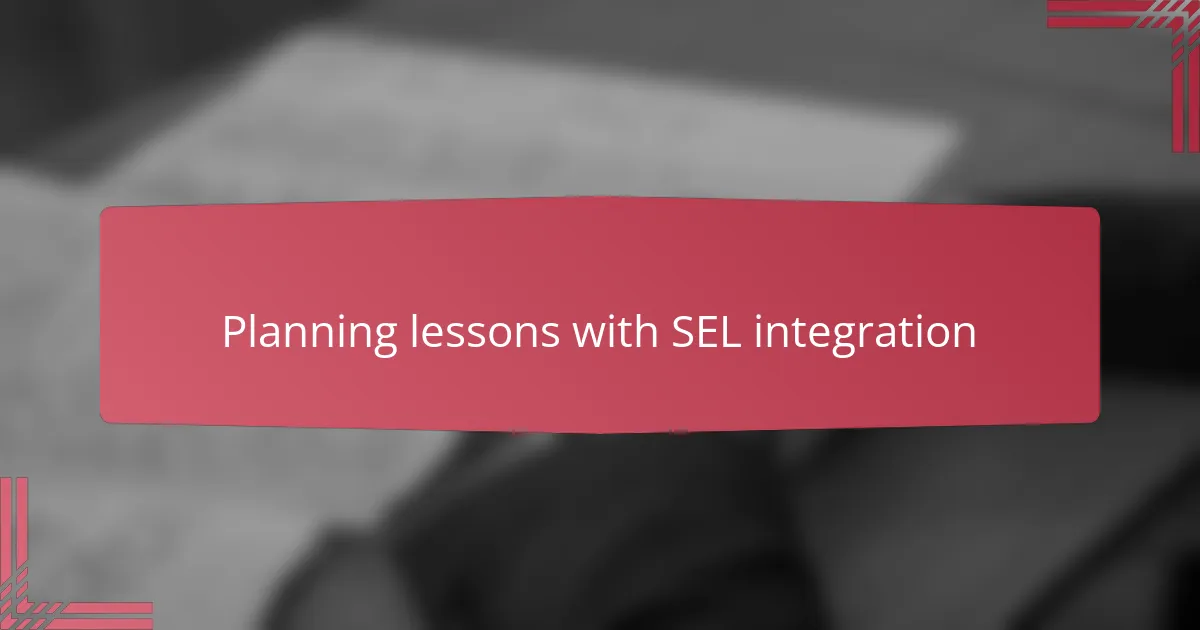
Planning lessons with SEL integration
Planning lessons with SEL integration often feels like piecing together a puzzle where academic goals meet emotional growth. I remember staring at my lesson plans, wondering how to weave in moments that encourage students to reflect on their feelings without steering too far from the content. Have you ever tried balancing curriculum demands with the need to check in on a student’s emotional state? It’s tricky but worthwhile.
What helped me was identifying natural entry points in my lessons to introduce SEL concepts—like starting a debate with a quick mindfulness exercise or incorporating cooperative group work to practice empathy. These small adjustments made a big difference. When students had the chance to pause and connect, the lessons gained more depth and meaning.
I also found that planning with flexibility in mind is crucial. Sometimes a thought-provoking question from a student would lead us far afield from my original outline, but that detour opened up important discussions on social justice and self-awareness. Do I regret those moments? Not at all. Those are the lessons I remember most fondly, and honestly, they taught me just as much as the students.
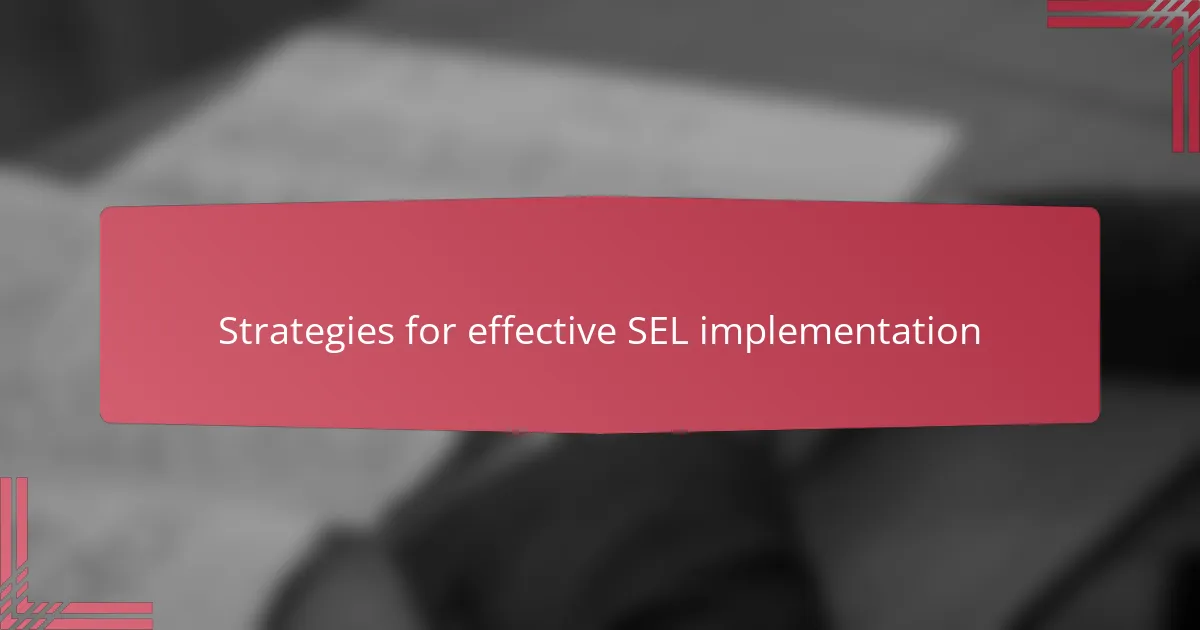
Strategies for effective SEL implementation
One strategy that truly transformed my approach was embedding SEL into everyday routines rather than treating it as a separate lesson. For instance, I started each class with a brief check-in where students could share a feeling or thought. It surprised me how this simple habit built a sense of community and made everyone more receptive to learning.
Another tactic I found effective was modeling emotional regulation myself. When I showed vulnerability—like admitting I was nervous before a presentation—it became easier for students to open up about their struggles. Have you noticed how your actions often speak louder than your words? In my experience, consistent modeling fosters trust and encourages honest conversations.
Finally, integrating collaborative projects that require empathy and perspective-taking helped SEL come alive in practical ways. During one group project on social issues, I saw students actively listen to differing viewpoints rather than just waiting their turn to speak. Moments like those made me realize SEL isn’t just a skill set; it’s the heartbeat of meaningful, engaged learning.
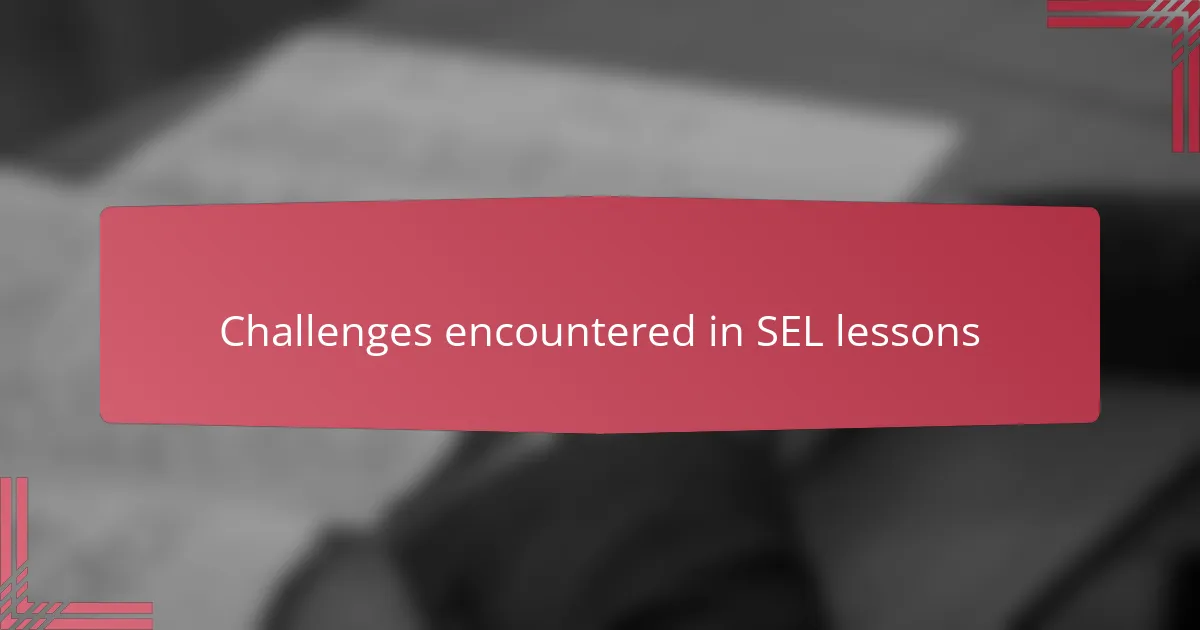
Challenges encountered in SEL lessons
Sometimes, despite careful planning, I faced students who were reluctant to share their feelings, almost as if opening up was a risk rather than a relief. Have you ever encountered that silence when you ask how someone feels? It made me realize that SEL isn’t a one-size-fits-all approach; it takes patience and trust-building over time.
Another challenge came from the pressure to cover academic content while also making space for emotional check-ins. I often found myself torn between sticking to the schedule and pausing to address a student’s moment of distress. Balancing these demands was sometimes exhausting, yet it underscored for me how essential SEL is to real learning.
I also struggled with my own uncertainty about leading sensitive conversations, especially when topics touched on trauma or injustice. I wondered, am I equipped to hold this space safely? These moments pushed me to seek support and professional development because, honestly, emotional learning demands emotional readiness on the teacher’s part too.
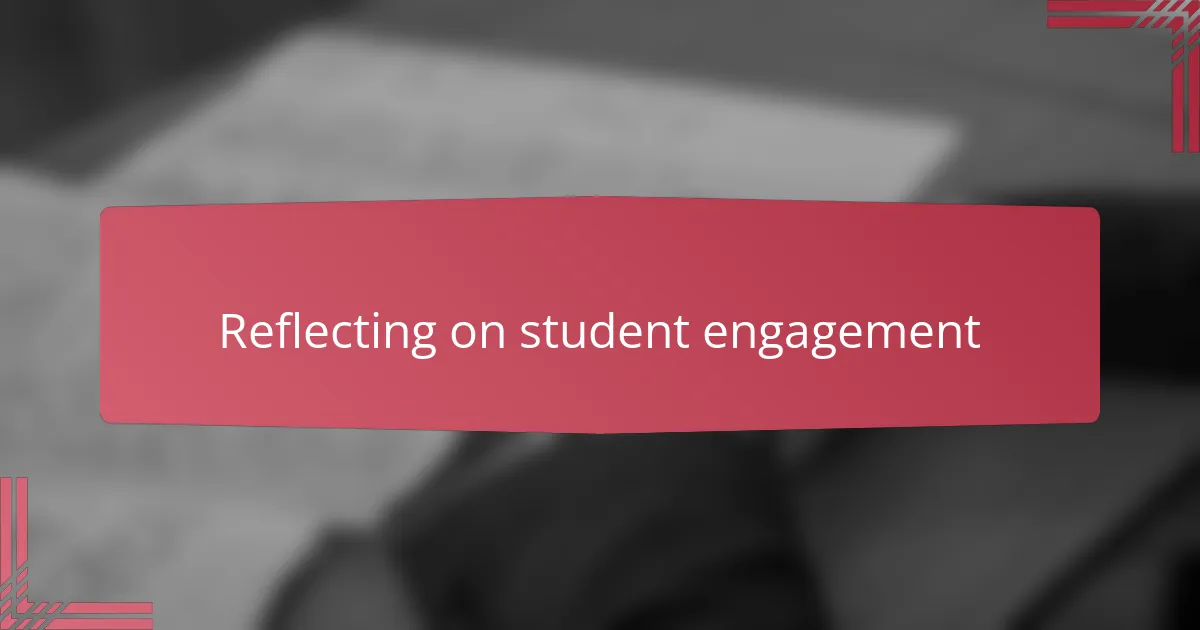
Reflecting on student engagement
Reflecting on student engagement after incorporating SEL revealed to me just how deeply connected emotions and active participation really are. Have you ever noticed how a student’s body language shifts when they feel heard and understood? I did, and it was like watching a subtle but powerful invitation to learn unfold before my eyes.
There were times when engagement surged unexpectedly—like during a lesson when a student linked a SEL activity to a personal story. That moment transformed the whole classroom energy, making discussions richer and more authentic. It made me realize that engagement isn’t just about staying busy; it’s about feeling safe enough to bring your whole self into the learning space.
Of course, not every day was that clear-cut. I often questioned if quieter students were truly engaged or just retreating, which pushed me to try new strategies to draw them in gently. It’s a constant learning curve, but those small breakthroughs reaffirm that nurturing social and emotional skills fuels genuine curiosity and involvement.
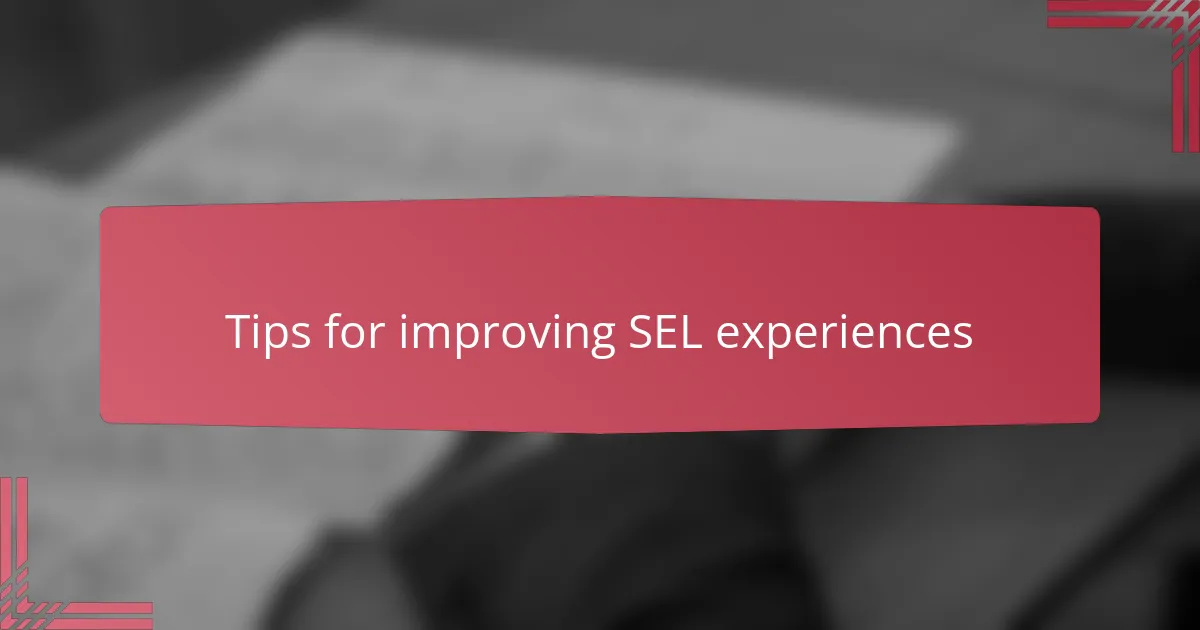
Tips for improving SEL experiences
One thing I’ve learned is the power of consistency. Setting aside just a few minutes at the start or end of each lesson for emotional check-ins can make all the difference. Have you ever noticed how those brief moments create a ripple effect, easing tensions and making students more open to learning throughout the day?
I also recommend weaving SEL into activities that already engage students, rather than adding extra tasks. For example, using group projects to practice active listening and empathy felt natural to me and avoided the “extra work” resistance. When students see SEL as part of how they collaborate, not a separate lesson, it sinks in more deeply.
Finally, don’t underestimate the impact of your own vulnerability. When I shared my own challenges with managing stress, it opened a door for students to be honest about theirs. It’s not always easy, but showing emotion models that it’s okay—and even brave—to express feelings in the classroom. What if our SEL experience began with us, the teachers, leading the way?